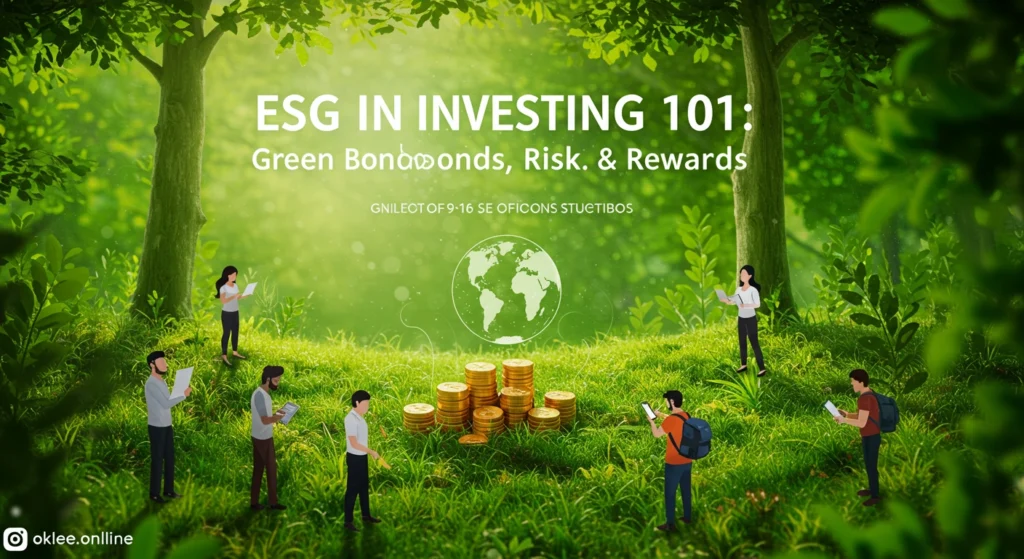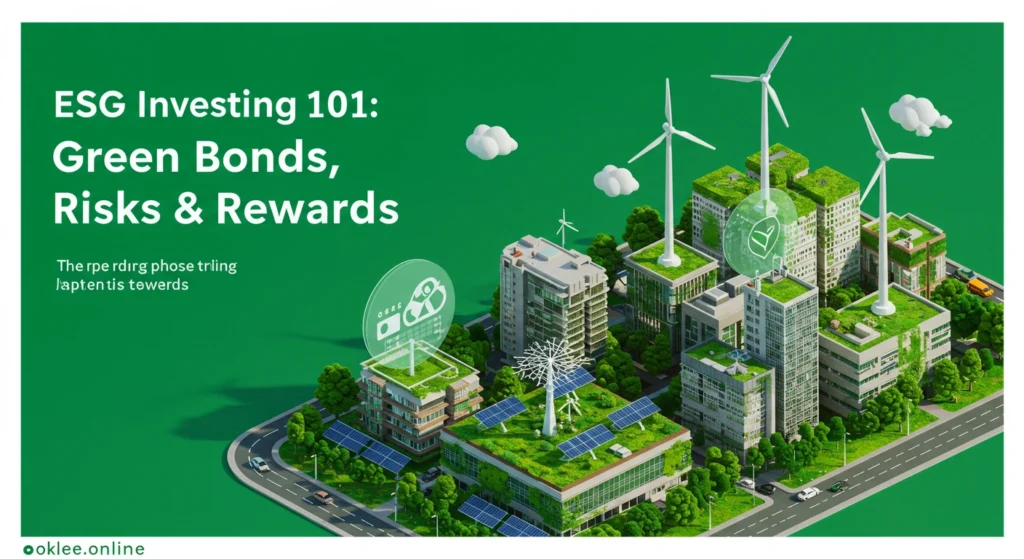In a world increasingly shaped by climate change, corporate ethics, and sustainability goals, ESG investing is more than a trend—it’s becoming a mainstream strategy. ESG stands for Environmental, Social, and Governance, and it’s changing how individuals and institutions choose where to put their money.
But while the appeal is growing, so are the risks—especially with greenwashing and inconsistent standards muddying the waters. If you’re new to ESG investing or trying to understand the real impact behind the labels, this guide walks you through the basics, benefits, and what to watch out for.
What Is ESG Investing?
ESG investing is an investment strategy that considers a company’s performance on environmental, social, and governance issues alongside its financial metrics.
The Three ESG Pillars:
- Environmental (E): Carbon footprint, pollution, renewable energy use, water conservation
- Social (S): Employee treatment, diversity, human rights, community impact
- Governance (G): Executive pay, board diversity, corruption, shareholder rights
This approach helps investors avoid companies that cause harm—or reward those making a positive impact.
ESG vs Traditional Investing
Traditional investing focuses mostly on financial return. ESG investing asks:
“Can we do well and do good?”
It’s not about charity. Many ESG-focused companies have strong fundamentals. In fact, some data suggests ESG funds may outperform in the long run due to lower risk exposure and stronger management practices.
That said, ESG investing comes with trade-offs, and not all ESG funds are created equal.
What Are Green Bonds?
Green bonds are fixed-income securities issued to fund projects with environmental benefits—like renewable energy, clean transportation, or sustainable agriculture.
How They Work:
- Investors lend money to a company or government
- The issuer promises to use the funds only for green projects
- Investors earn a regular interest payment
- At maturity, the principal is returned
Popular Green Bond Issuers:
- World Bank
- Apple
- European Investment Bank
- Government agencies (e.g., India, France, U.S. municipalities)
These are a key piece of the sustainable finance puzzle—especially for conservative investors looking for steady income with an environmental impact.
ESG Investing Benefits
✅ 1. Long-Term Stability
Companies with strong ESG scores are often better managed, more resilient to regulation, and better at adapting to climate and social trends.
✅ 2. Risk Mitigation
Avoiding companies with poor labor practices, pollution records, or weak governance can reduce legal and reputational risk in your portfolio.
✅ 3. Consumer & Investor Alignment
Younger investors (Millennials, Gen Z) increasingly want their money to match their values—making ESG-focused firms more attractive.
✅ 4. Tax Incentives & Grants
In some regions, ESG investments (especially green bonds) offer tax advantages or qualify for public funding.
ESG Investment Options
You can invest in ESG in multiple ways:
1. ESG Mutual Funds & ETFs
- Examples: iShares ESG Aware ETF (ESGU), Vanguard ESG U.S. Stock ETF (ESGV)
- Designed to track indices of companies with strong ESG performance
2. Green Bonds
- Safer, income-generating way to support environmental projects
3. Direct Stock Picks
- Companies like Tesla, Ørsted, or Enphase Energy offer direct ESG exposure
4. Impact Funds
- Go beyond ESG scores to invest in companies solving climate or social challenges directly
What Is Greenwashing?
Greenwashing is when a company or fund claims to be environmentally friendly—but the reality doesn’t match the message.
This is one of the biggest risks in ESG investing.
Common Greenwashing Tactics:
- Vague language (“eco-conscious,” “sustainable”) with no proof
- Highlighting one green initiative while ignoring larger environmental harm
- Labeling a fund “ESG” while holding fossil fuel or tobacco stocks
- Lack of third-party certification or ESG metrics
How to Avoid Greenwashing
🔍 Read the Fine Print
Always check the fund’s holdings or a company’s ESG reports. Many “sustainable” funds still include high-carbon industries.
📊 Look for Third-Party Ratings
Use platforms like:
- MSCI ESG Ratings
- Morningstar Sustainability Ratings
- Sustainalytics
- FinancePathways.com for simplified ESG breakdowns
🏷 Check the Standards
Funds that follow official standards—like the EU Taxonomy, Green Bond Principles, or UN PRI (Principles for Responsible Investment)—are more reliable.
Challenges Facing ESG in 2025
Even as ESG investing grows, it’s facing serious hurdles:
1. Lack of Standardization
There’s no single global ESG standard. A company rated “high” by one agency might be rated “average” by another.
2. Political Pushback
Some governments have questioned ESG’s role in fiduciary duty. In the U.S., several states have restricted ESG considerations in public pensions.
3. Performance Pressures
Some ESG funds underperformed during the 2022–2023 energy boom, causing critics to question their long-term viability.
Tips for ESG Investing in 2025
✅ Start with your values—environment, social justice, governance
✅ Use diversified ETFs if you’re unsure where to begin
✅ Review fund documents before investing
✅ Recheck annually—ESG ratings and holdings change
✅ Be realistic—you won’t solve climate change with one ETF, but every move counts

Final Thoughts
ESG investing isn’t perfect. But in 2025, it’s no longer just a “feel good” approach—it’s a financial strategy that aligns with long-term global trends. Whether through green bonds, sustainable ETFs, or direct stock picks, investors now have more ways than ever to make a positive impact.
Just be careful. Greenwashing is real, and blindly chasing ESG labels can do more harm than good. Take your time, read the data, and invest with purpose.
Want more guides like this?
Subscribe to oklee.online for weekly breakdowns on ethical investing, finance automation, and long-term wealth strategies.



